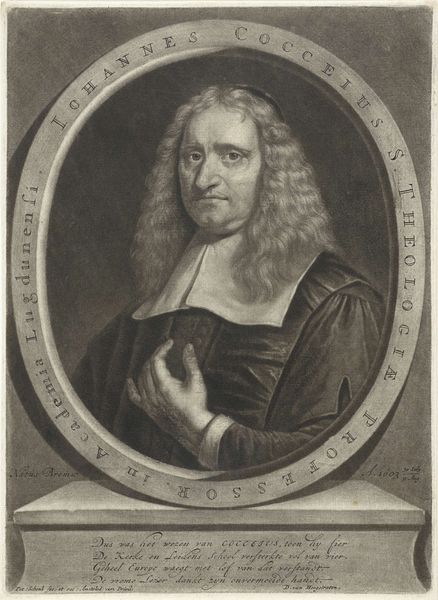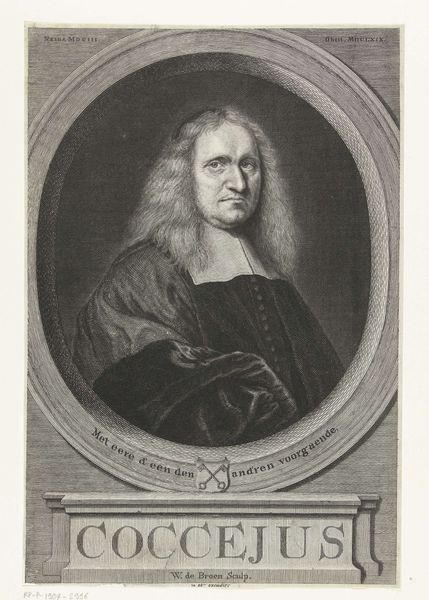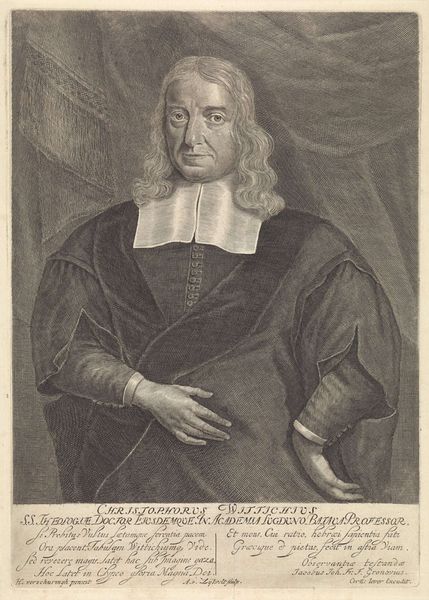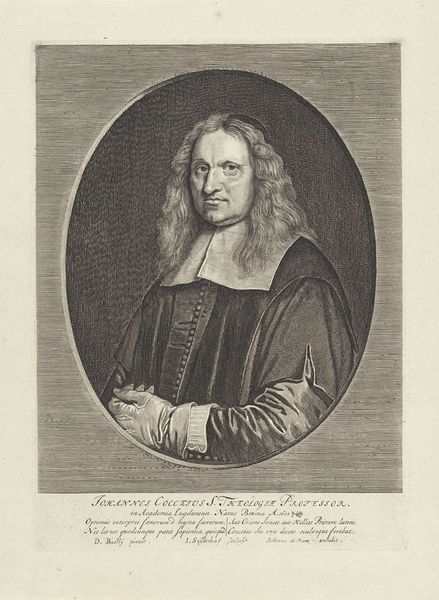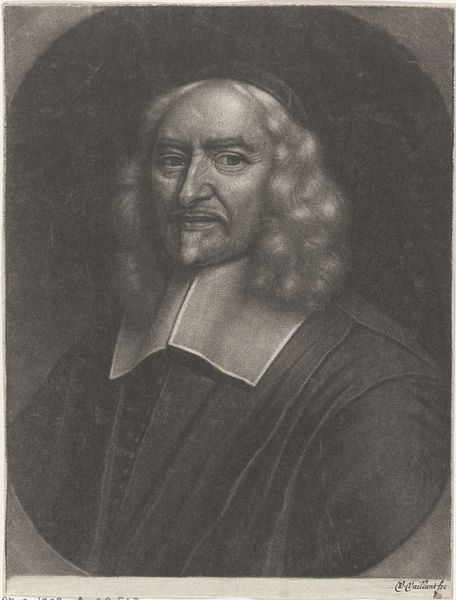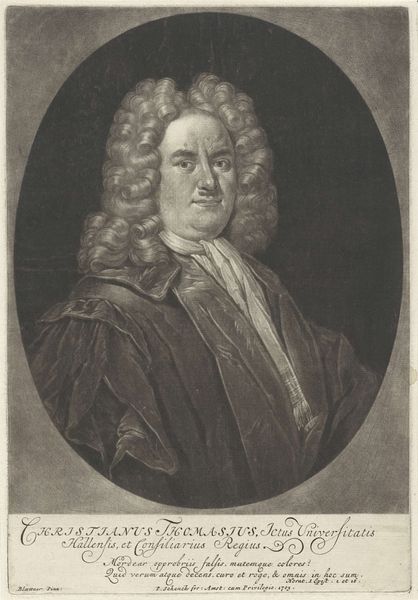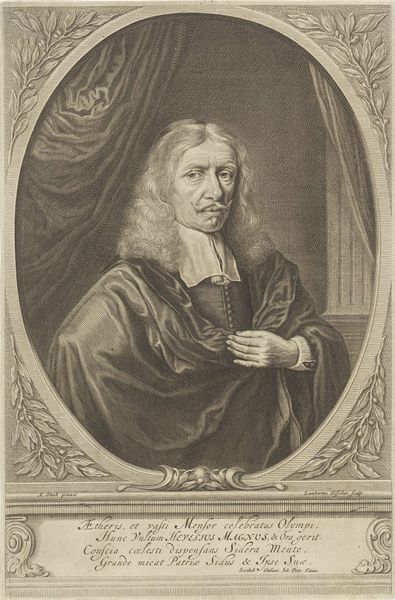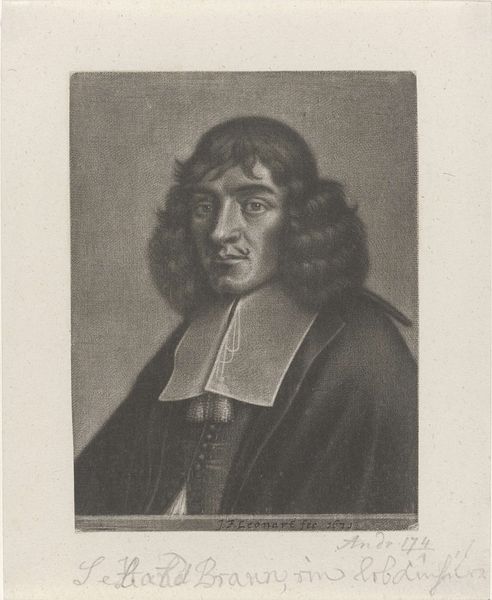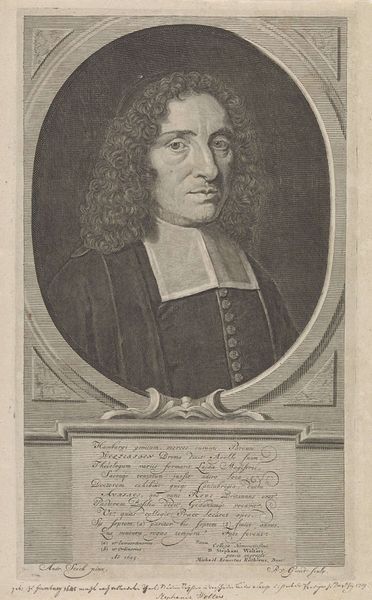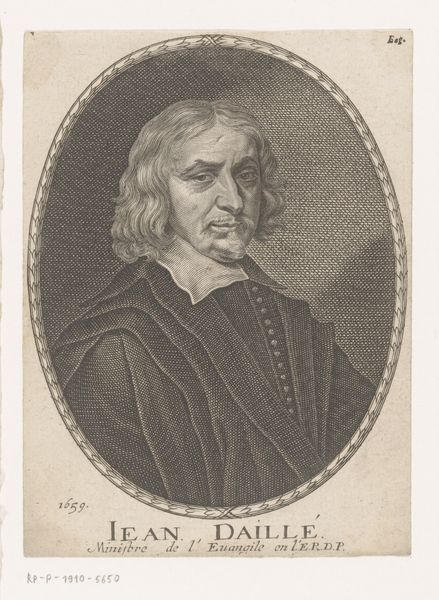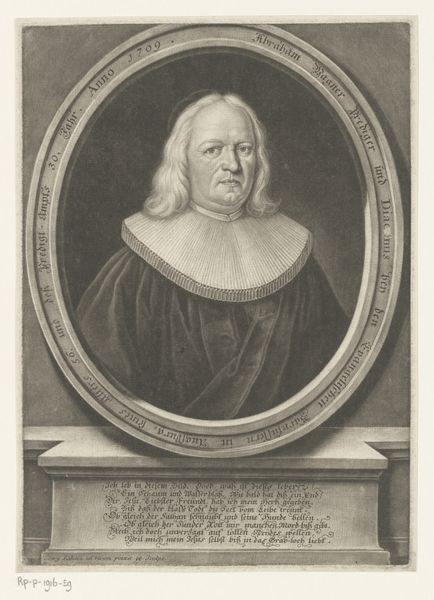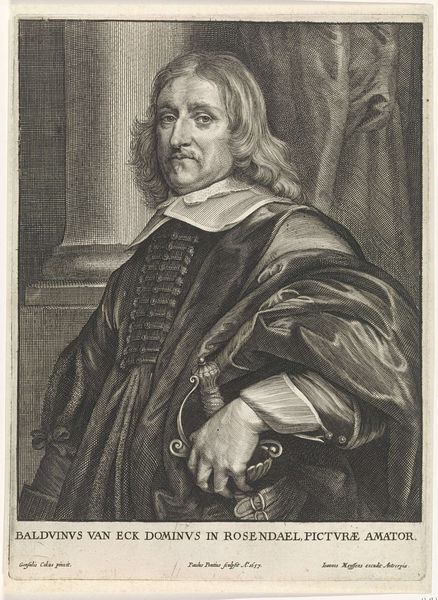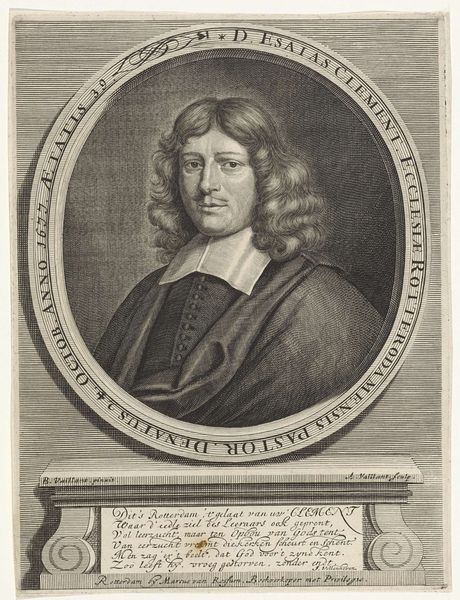
#
facial expression drawing
#
pencil sketch
#
charcoal drawing
#
charcoal art
#
portrait reference
#
pencil drawing
#
animal drawing portrait
#
portrait drawing
#
portrait art
#
fine art portrait
Dimensions: height 218 mm, width 140 mm
Copyright: Rijks Museum: Open Domain
This is Johannes de Groot’s portrait of Johannes Cocceius, rendered with etching. Notice the oval frame; it’s more than mere decoration. From antiquity to the Renaissance, the oval symbolized the cosmos, eternity, and the womb. Here, it suggests Cocceius’s ideas are timeless, universal. The severe gaze, the voluminous hair, and the dark robe all convey solemnity. The sitter's appearance echoes depictions of ancient philosophers and religious figures, embedding Cocceius in a lineage of intellectual authority. Consider the heavy, dark clothing. This is not simply attire, but a symbolic weight of knowledge and piety. Such robes appear in countless portraits, linking figures across centuries through this shared visual language of wisdom. This echoes the collective memory and unconscious reverence for intellectual and religious figures deeply embedded in our psyche. Symbols, however, evolve. Today, the robe might signify something different: power, formality, or even oppression. The meaning is not fixed, but cyclical, changing with time and context, a constant dance between past and present.
Comments
No comments
Be the first to comment and join the conversation on the ultimate creative platform.
